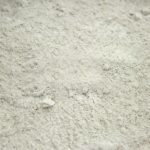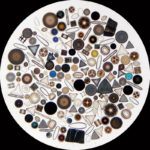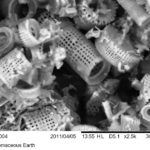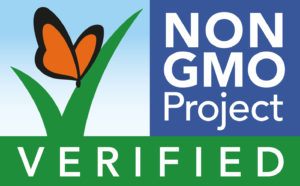Considering Home Birth
Recently, a new article about hospital charges has been making the rounds on social media. A family received their bill for the birth of their child. Included in the itemized statement was a $39.35 fee for the mother to hold her baby immediately after his birth with skin-to-skin contact.
The official explanation that is given for charging a mother to hold her child is the need for an extra person to stand beside her to ensure the baby is not dropped (think C-Section cases, drugged up moms, etc.) While this may initially sound reasonable, when the high of finally meeting your little one wears off, that forty dollar charge can take on a different persona.
Skin-to-skin contact is incredibly beneficial for both the mother and baby. It helps baby regulate temperature, increases the odds for a healthy breastfeeding relationship, and reduces postpartum depression. It’s a simple act that could set up a successful mother and baby relationship, but not all hospitals are willing to offer it, even with a charge. That forty dollars is now a symbol of a standard of care that places money and legal liability before patient needs.
So often we are unable to choose whether or not to go to the hospital. Hospitals provide a necessary and important service. For trauma care, there is no better place to be. But is this the case for childbirth?
Yes, hospital deliveries may be the best choice for a woman with a high-risk pregnancy, but home births are a viable option for women who are considered low-risk. Since statistics show the same or better outcomes for home births, what are the benefits from choosing a home birth? What is the downside?
The Upside
When women give birth at home with a trained midwife, they are less likely to experience birth interventions like episiotomies and fetal electronic monitoring. Mothers are less likely to suffer from postpartum hemorrhages, severe perineal tears, and infections. Comparison studies between planned home births and hospital births in countries like Canada, the United Kingdom, the United States, and the Netherlands (the industrialized country with the highest percentage of recorded home births) have found that home births compare positively to the hospital outcomes. Fewer births result in C-sections, and the mother’s health is often better.
A home birth also gives the mother more control and comfort in her surroundings. Being in your home where you are able to play the music you want, enjoy food and water at leisure, and chose whatever position is most comfortable and makes the most sense to you during birth can have an enormous impact psychologically and hormonally. Stress hormones can stop or impede a labor. In the hospital that opens the door to increasing amounts of obstetric intervention. Pain and stress that could be gently eased with a hot bath at home can be interpreted as a need for pitocin and increased fetal monitoring, which in turn increases the chances of complications.
Know Your Risks
Yes, home birth can be amazing, but it isn’t all sunshine and roses. Anyone interested in or considering a home birth needs to do their research.
Look at the risks frequently associated with home births and plan scenarios for how you would handle them. Frank discussions with your midwife are a necessity. There is the possibility that things will go wrong, and knowing the fastest route to the hospital can make a big difference in your birth outcome.
But Then That’s Me
I’ve always heard my mother say her her hips were too small, messed up, or weird whenever we talked about her birth experience. She even claims her doctors agreed. I even remember her making a comment (looking back, a wildly inappropriate one) about how my youngest sister had good hips for having kids, but I had inherited hers.
When I told her I was looking into homebirth, she seemed all for it. But then she started making comments about how she wished she could have given birth naturally but her babies were too big. After one discussion with a nurse friend who spends her time “praying for all the dead babies”, my mother spent the rest of my pregnancy frantically trying to talk me out of having a home birth. All I heard from her was a litany of ways my home birth was going to go wrong and how irresponsible my decision was when all that mattered was a healthy baby. Though I’m sure most women experience doubts and fears about home birth, my doubts and fears had taken physical form.
Here’s the kicker. After two healthy home births, I have to admit she was right about one thing – I had inherited her hips. Both of my labors were long and included painful back labor in spite of positioning exercises and various other attempts to avoid it. I had to contort into weird positions to coax the little ones out of the tunnel. I’m left to conclude that it’s just me and my weird ass pelvis. If I were an obstetrician in the hospital, I’d C-section someone like me if only for taking so damn long and refusing to let anyone touch me.
But that’s the problem with the way we currently treat birth in a modern medical setting. We’re no longer doing everything in our power to ensure the best possible emotional and physical outcome for baby and mother. We’re seeing a beautiful moment that has the potential to leave a woman feeling better about her bond with her baby, an act that can help combat post-partum depression, and reducing it to another extra charge on the hospital bill.
I keep thinking back on my children’s births, imagining how badly things could have gone in the hospital, and how glad I am that I chose to give birth at home. My children are perfect. I’m here, happy, healthy and above all empowered. I never participated in a standard of care that would have labeled me as flawed. Unlike my mother, I will not spend the rest of my life apologizing to my kids for my weird hips. As far as I’m concerned, they worked just fine.
Recommended Reading:
- SIDS and SUID
- Circumcision, the Primal Cut – A Human Rights Violation
- Galactagogues Foods, Herbs, and other Ways to Increase Breast Milk Production
- Common Bad Parenting Advice You Should Ignore
Sources:
- Dad Shocked That He Was Charged $40 to Hold His Newborn in the Delivery Room – New York Daily News
- Outcomes of Planned Home Birth With Registered Midwife Versus Planned Hospital Birth With Midwife or Physician – Canadian Medical Association Journal
- Wary of Home Birth’s Risk Factor – Surprising New Study May Change Your Mind – parenting.com
- Home Birth Safety – Science Based Medicine
- A Home Birth Story




